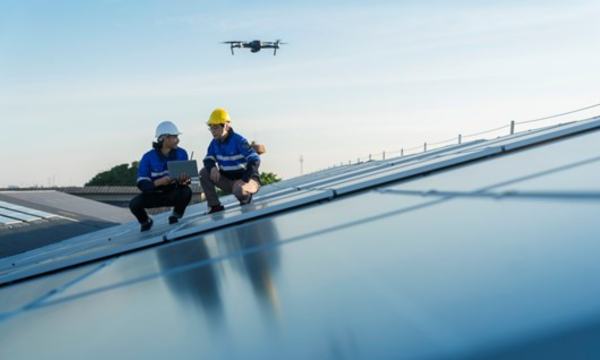Research being carried out at the University of South Wales (USW) could help to save lives in areas impacted by natural disasters.
The work by PhD student Mthabisi Adriano Nyathi; Dr Jiping Bai, who is Associate Professor of Research and Development; and Associate Professor Dr Ian Wilson, who specialises in Artificial Intelligence, could also help slash the cost of monitoring vital infrastructure, such as bridges, railways, tunnels, buildings, and dams.
The project is using artificial intelligence (AI) to enhance a process called structural health monitoring (SHM), through which engineers evaluate structures over time to make sure they are still sound and not in danger of failing.

Mr Nyathi, who has a Civil Engineering degree from the University of Pretoria and a Masters in Civil and Structural engineering from USW, explained how the system works.
“In civil engineering, structures can deteriorate over time due to lack of maintenance, which can lead to a decrease in structural integrity and eventual failure,” he said.
“Through structural health monitoring (SHM), crucial inspection and evaluation of infrastructure systems – such as bridges, railways, tunnels, buildings, and dams – is carried out to ensure their safety and reliability.
“This can prevent catastrophic failures which could result in environmental, societal, and economic consequences, and even loss of life.”
Traditional SHM typically involves a combination of visual inspections, performed on-site by qualified engineers or specialists, which look for signs of deterioration or damage, such as cracks, corrosion, or deformation. This can be followed by lab tests. These methods can be expensive, lack consistency, and may not provide real-time data.
The USW project has been looking to develop an innovative approach to SHM by deploying AI techniques to quickly identify defects, damage, or potential failures that may occur.
“By continuously monitoring and assessing structural integrity, we can make timely repairs and retrofitting existing infrastructure, and extend the lifespan of critical infrastructure to address the challenges posed by climate change and to create a more resilient future for our communities,” Dr Bai said.
“When natural disasters, such as earthquakes, occur, being able to monitor infrastructure remotely could have a range of benefits,” Dr Wilson added.
“The system can be deployed from a safe distance, specialists far from the area can gauge any damage and need for repair, or advise on the need to restrict access to any unsafe structures – the applications could be numerous.”
Mr Nyathi has a long-standing fascination with the use of advanced computer applications in civil and structural engineering, and wanted to use his PhD to look in more detail at how AI can make the SHM process quicker, safer, and more robust.
“Beyond the buzz, mystery, and ethical concerns surrounding AI, if it is used responsibly it could have positive socio-economic impacts,” he said.
The project has already been well-received. Mr Nyathi was awarded the prize for Best Poster Presentation in the Postgraduate Researchers’ Presentation Day at the USW last year, while the team presented two papers at The Fourteenth International Conference on Computational Structures Technology and The Eleventh International Conference on Engineering Computational Technology conferences held in Montpellier, France, last August.






